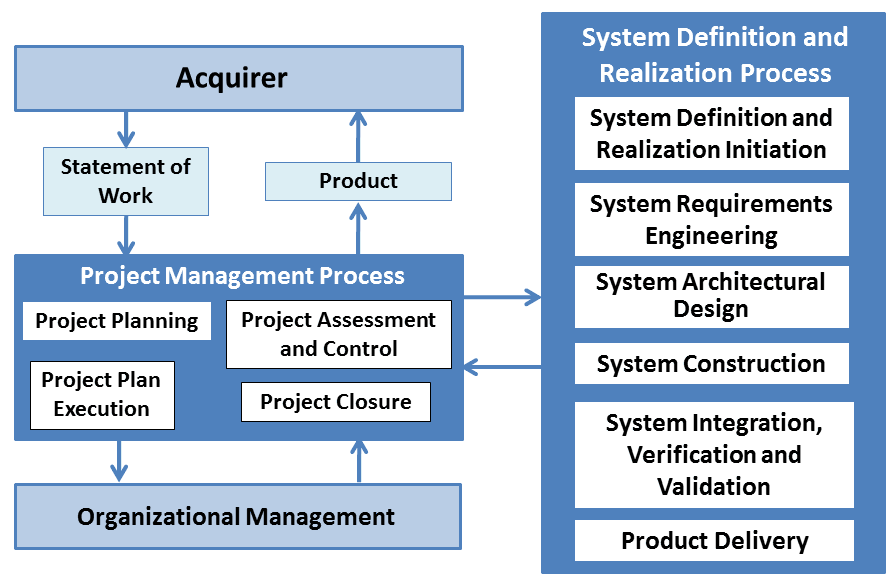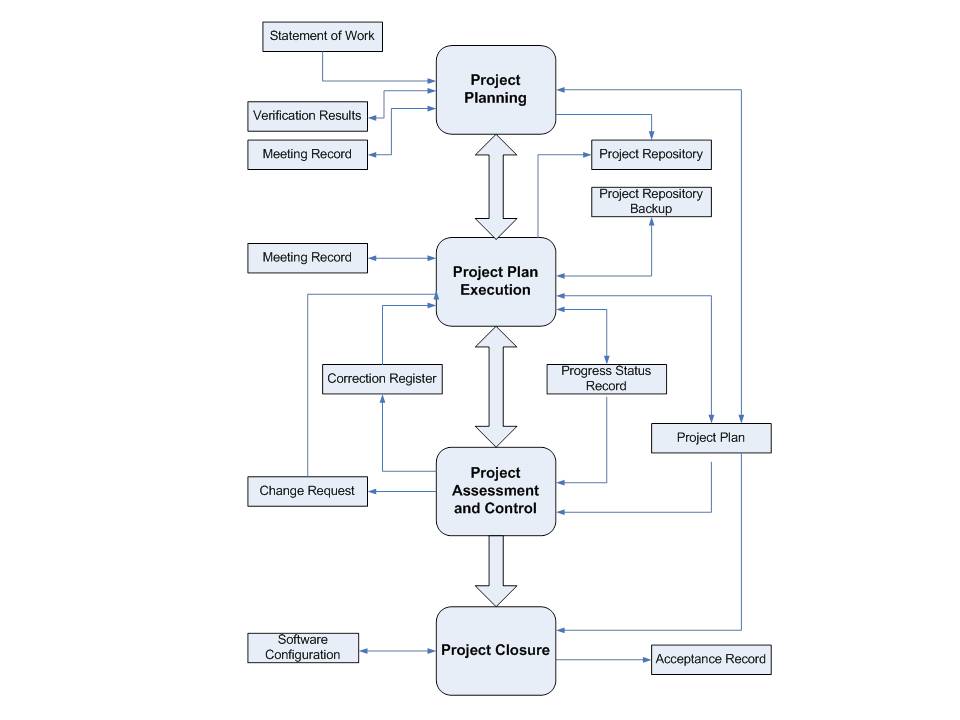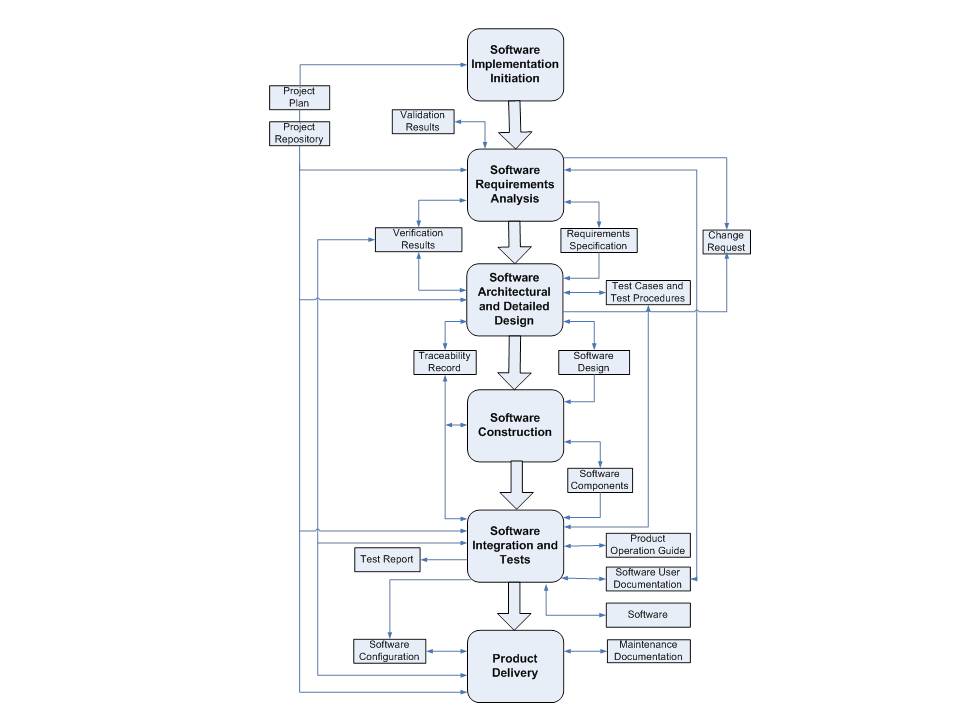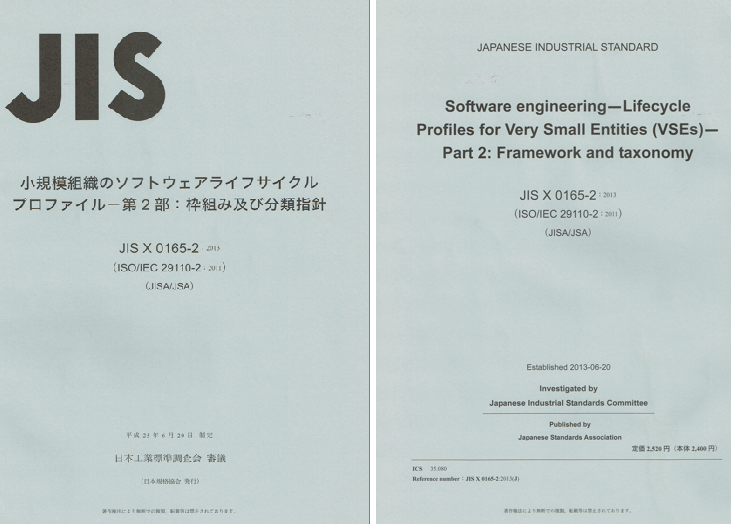This page describes the concept of Profiles, the Generic Profile and the four Profiles of the Generic Profile Group for VSEs developing systems, having hardware element, and/or software.
Profiles
The core characteristic of the entities targeted by ISO/IEC 29110 is size, however there are other aspects and characteristics of VSEs that may affect profile preparation or selection, such as: Business Models (commercial, contracting, in-house development, etc.); Situational factors (such as criticality, uncertainty environment, etc.); and Risk Levels [1]. Creating one profile for each possible combination of values of the various dimensions introduced above would result in an unmanageable set of profiles. Accordingly VSE’s profiles are grouped in such a way as to be applicable to more than one category. Profile Groups are a collection of profiles which are related either by composition of processes (i.e. activities, tasks), or by capability level, or both [2].
The Generic Profile Group
The Generic Profile Group has been defined [3] as applicable to a vast majority of VSEs that do not develop critical systems or software and have typical situational factors. The Generic Profile Group is a collection of four profiles (Entry, Basic Intermediate, Advanced), providing a progressive approach to satisfying a vast majority of VSEs.
|
Profile Group |
Profile |
|
Generic |
Entry |
|
Generic |
Basic |
|
Generic |
Intermediate |
|
Generic |
Advanced |
Note: Part 1, Part 3 and Part 5 are available at no cost from ISO: http://standards.iso.org/ittf/PubliclyAvailableStandards/index.html
The set of documents is intended to be used by a VSE to establish processes to implement any development approach or methodology including, e.g., agile, evolutionary, incremental, test driven development, etc. based on the organization or project needs of a VSE.
------------------------------------------------------------------------------------------------------------------
VSEs Developing Systems
ISO has approved a project to develop a set of standards for VSEs developing systems having a hardware element. ISO/IEC/IEEE 15288 is used as the main standard for the development of standards and guides for VSEs developing systems.
The Entry Profile (published in November 2015)
The first version of the Entry profile (ISO/IEC TR 29110-6-5-1), i.e. for VSEs working on small projects (e.g. at most six person-months effort) and for start-up VSEs.
The Basic Profile
This profile (ISO/IEC TR 29110-6-5-2:2014) applies for non-critical systems development projects.
Using this profile, a VSE can obtain benefits in the following aspects:
- An agreed set of project requirements (technical part of contract) and expected products are agreed by the Acquirer;
- A disciplined
management process, that provides project visibility and corrective actions of
project problems and deviations, is performed;
- A systematic System Definition and Realization process, that satisfies Acquirer needs and ensures quality products, is followed.
The systems
engineering Basic profile, as illustrated in the figure below, is composed of two
processes: Project Management (PM) and System Definition and Realization (SR). An
acquirer provides a SOW as an input to the PM process and receives a product as
a result of SR process execution.
Processes of the Systems Engineering Basic Profile
Note: The Management and Engineering Guide of the Basic profile is available at no cost from ISO.
The Basic profile is targeted at VSEs who do not develop critical systems and do
not have experience with systems engineering process planning and implementation using ISO/IEC/IEEE
15288.
The Basic profile is intended to be
used with any processes, techniques and methods that enhance the VSE's Stakeholders
satisfaction and productivity.
------------------------------------------------------------------------------------------------------------------
VSEs Developing Software
The Entry Profile
VSEs Targeted by the Entry Profile are VSEs working on small projects (e.g. at most six person-months effort) and for start-up VSEs.
Characteristics of the Targeted VSEs:
-
Primarily involved in the design and/or coding of minor software package
-
Do not have significant experience with large software development projects, and so do not attract contract jobs from larger software firms
-
Personnel often relatively inexperienced
-
Often lack discipline in product development tasks: focus mostly in coding activities
-
Lack of tangible process assets
-
Limited access to investments and loans
-
May lack credibility and need for a reference (e.g. from a previous customer)
-
Customers may impose a software development process
Objectives of the Entry Profile
-
The Entry Profile should provide a foundation for a migration to the Basic Profile Processes.
-
The Entry Profile could be used by VSEs to help them implement a start-up management process and an implementation process.
The Entry Profile is composed of two processes (see figure below), a Project Management process and a Software Implementation process:
-
The purpose of the Project Management process is to establish and carry out in a systematic way the tasks of the software implementation project, which allows complying with the project’s objectives in the expected quality, time and cost.
-
The purpose of the Software Implementation process is the systematic performance of the analysis, design, construction, integration and tests activities for new or modified software products according to the specified requirements.
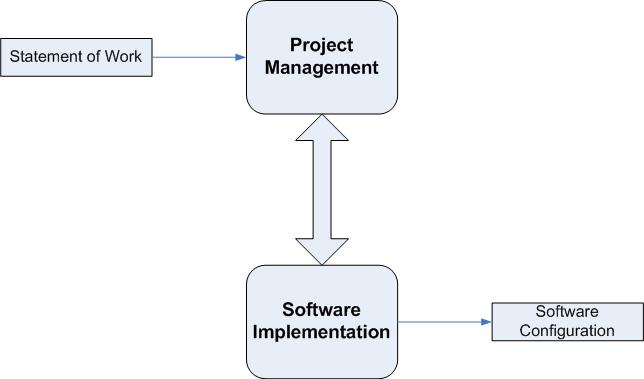
Processes of the Entry Profile (ISO/IEC TR 29110-5-1-1: 2012)
Project Management and Software Implementation Objectives of the Entry Profile
Since the Entry Profile has been developed using the Basic Profile (see below), to illustrate was has been added or deleted the following convention is used:
- Information added or modified to the Basic Profile is shown in blue while information deleted is shown like this:
strike out.
The objectives of the Project Management (PM) Process of the Entry profile, listed in ISO/IEC TR 29110-5-1-1: 2012, are:
|
Objective ID |
Objectives |
|
PM.01 |
The Project Plan for the execution of the project is developed according to the Statement of Work and reviewed and accepted by the Customer. The tasks and resources necessary to complete the work are sized and estimated. |
|
PM.02 |
Progress of the project monitored against the
Project Plan
|
|
PM.03 |
The
Changes Requests
are addressed |
|
PM.04 |
Review meetings with the Work Team and the Customer are held. Agreements are registered and tracked. |
|
PM.05 |
|
|
PM.06 |
|
|
PM.07 |
Software Quality Assurance is performed to provide assurance that work products and processes comply with the Project Plan and Requirements Specification. |
The Project Management Process has the following activities (see figure below
- PM.1 Project Planning
- PM.2 Project Plan Execution
- PM.3 Project Assessment and Control
- PM.4 Project Closure
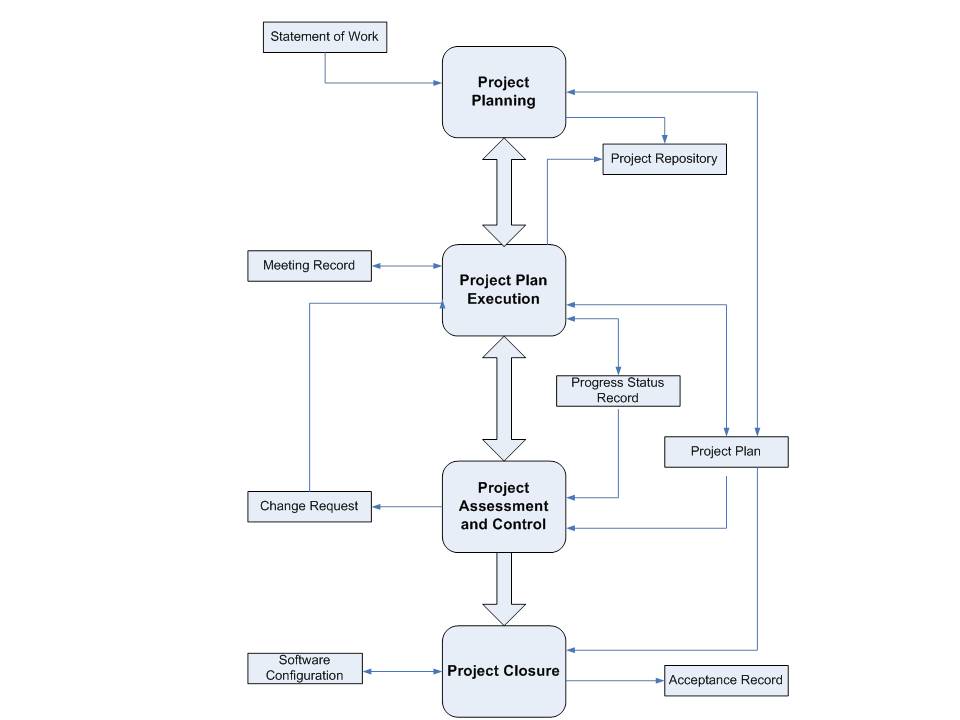
Project Management process diagram of the Entry Profile (ISO/IEC TR 29110-5-1-1)
------------------------------------------------------------------------------------------------------------------
The objectives of the Software Implementation (SI) Process of the Entry profile, listed in ISO/IEC TR 29110-5-1-1: 2012, are:
|
Objective ID |
Objectives |
|
SI.01 |
Tasks of the activities are performed through the accomplishment of the current Project Plan. |
|
SI.02 |
Software requirements
and their interfaces
are defined, analyzed for correctness and testability, approved
by the Customer, |
|
SI.03 |
Software components are identified.
|
|
SI.04 |
Software
components |
|
SI.05 |
Software
is produced . |
|
SI.06 |
Software configuration is prepared for delivery.
|
|
SI.07 |
Verification and Validation Tasks of all required work products
are performed |
The Software Implementation Process has the following activities (see figure below)
- SI.1 Software Implementation Initiation
- SI.2 Software Requirements Analysis
- SI.3 Software Component Identification
- SI.4 Software Construction
- SI.5 Software Integration and Tests
- SI.6 Product Delivery
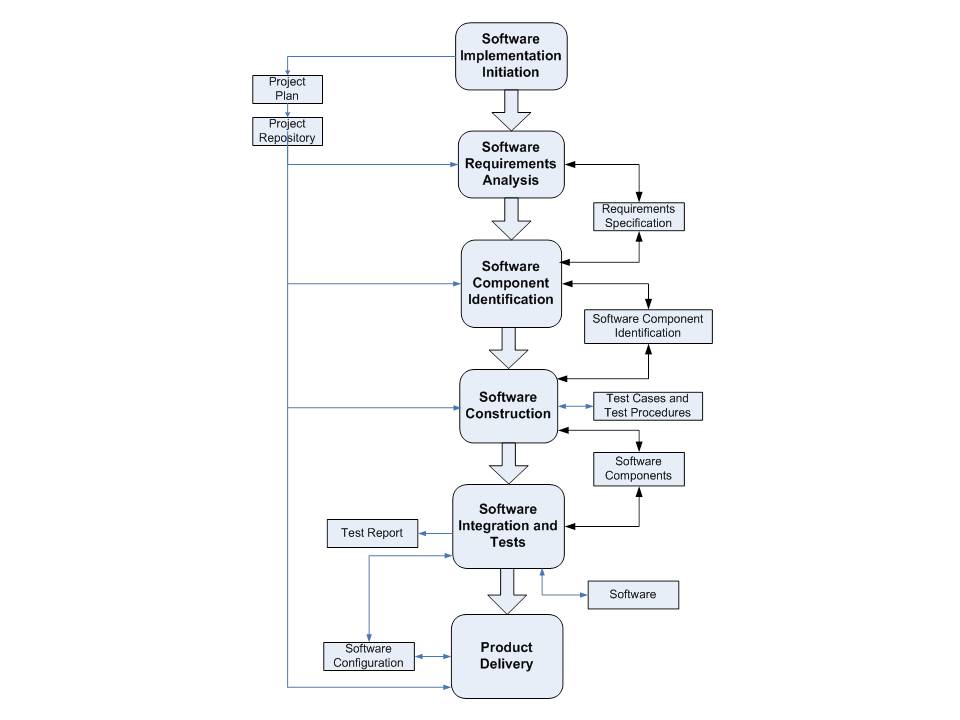
Software Implementation Process Diagram of the Entry Profile (ISO/IEC TR 29110-5-1-1)
------------------------------------------------------------------------------------------------------------------
The Basic Profile
